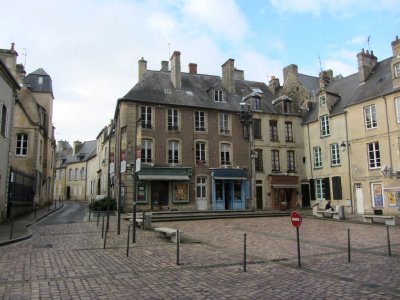
our trip starts in historic Bayeux... |
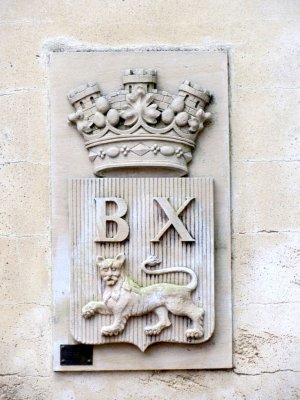
...home of the famous tapestry |
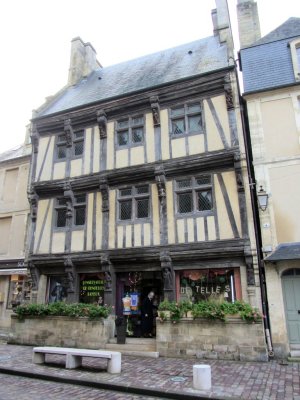
historic houses and buildings abound |
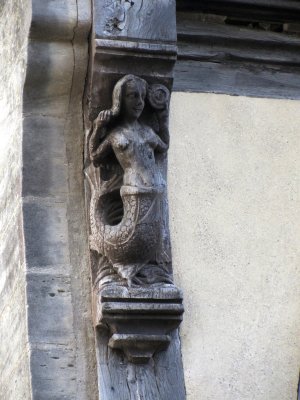 |
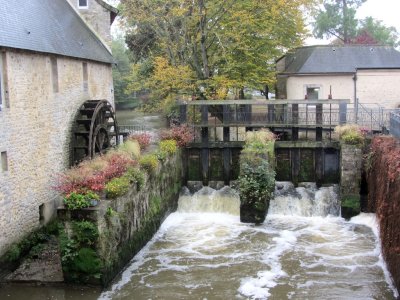 |
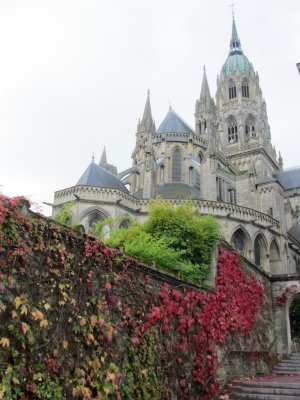
around every corner is something ancient... |
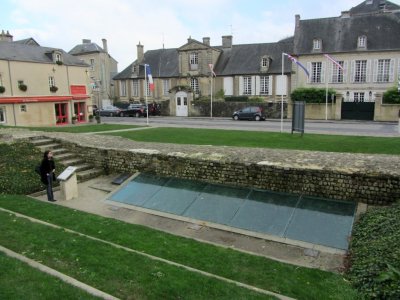
...here, a gallo-roman wall beneath the ground |
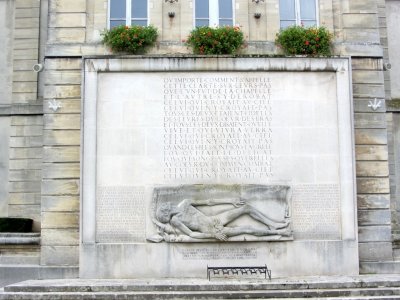
but there are also many reminders of WWII |
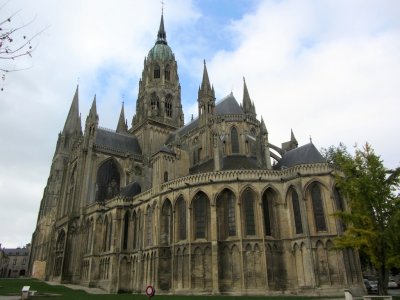
at the romanesque-gothic cathedral... |
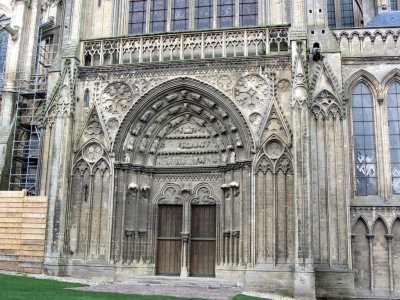
...vestiges of structure date from the 12th to 15th centuries |
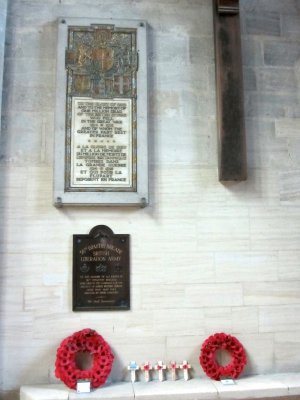
inside, memorials to France's WWI dead and the British troops who fought here in 1944 |
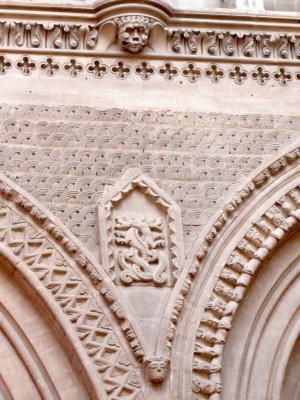
delicate stone reliefs distract us... |
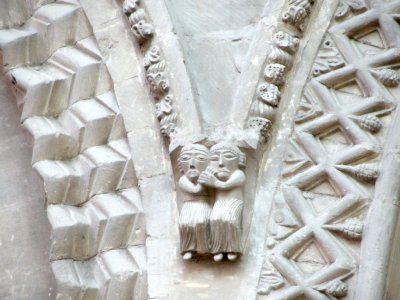
...and even remind us of the opposite of war |
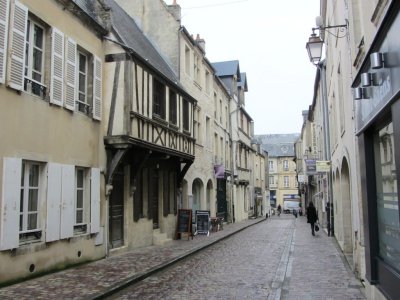
time for a stroll through the old city streets |
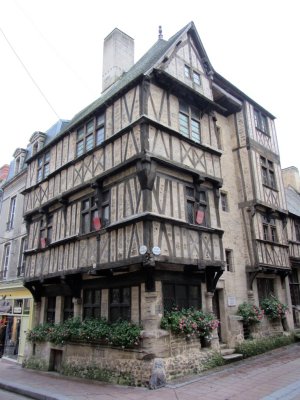 |
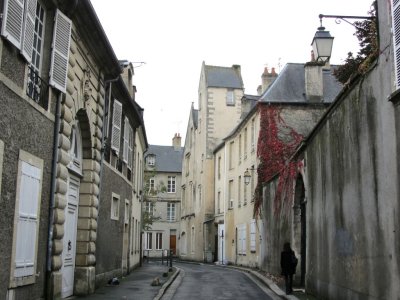
it seems pretty quiet... |
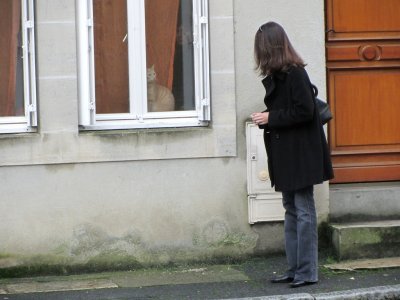
...but at least a few citizens are on watch |
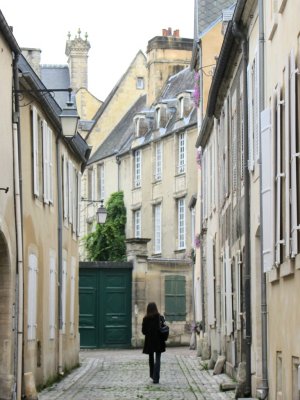 |
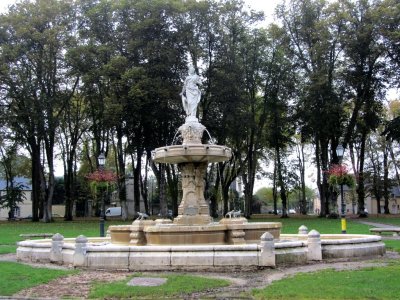
here's the park where deGaulle spoke to the French people soon after D-Day |
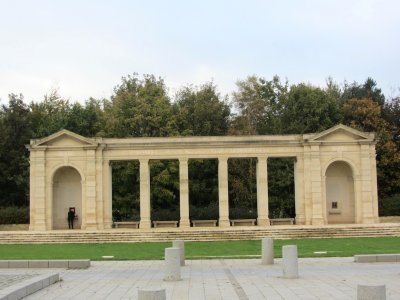
this is one of many British military cemeteries in Normandy |
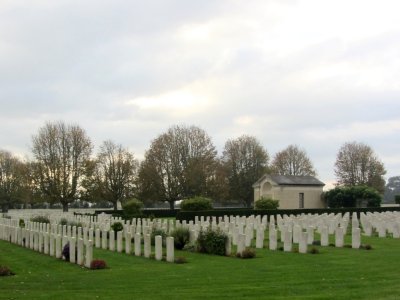
here, more than 4500 British and Commonwealth soldiers were buried... |
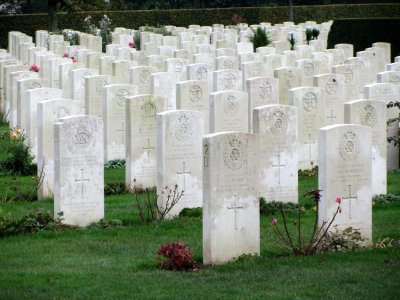
...along with a smaller number of Allies and Germans... |
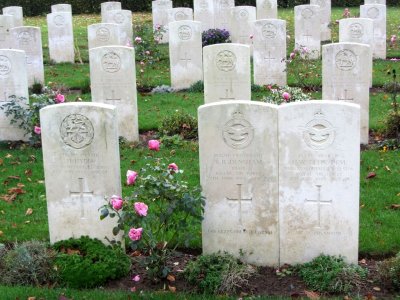 |
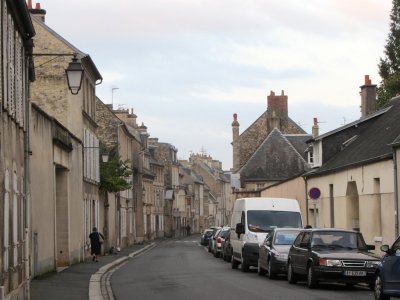
heading back into town at dusk... |
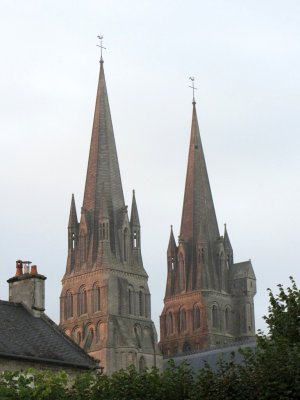
...it's pretty easy to keep our bearings |
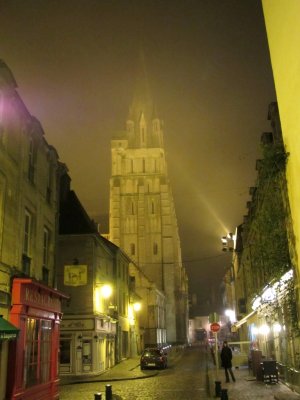
even after dark, getting around on foot is easy |
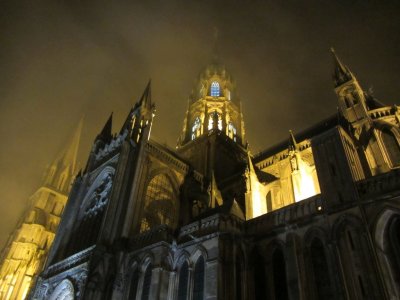 |
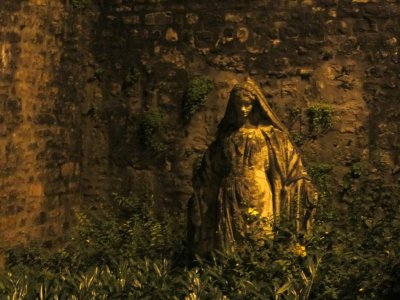
and if we get lost, there are helpful guides |
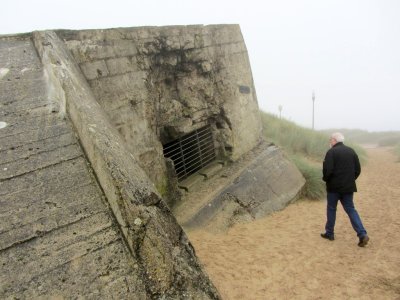
the next day, we head first to Juno Beach near Courseulles-sur-Mer... |
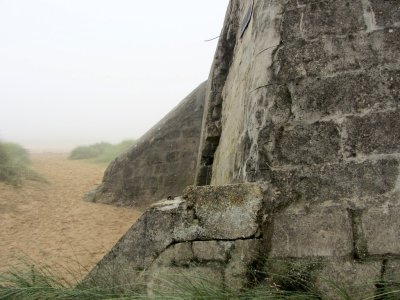
...where Canadian and British troops fought to take or destroy the guns in the eastern half of the invasion |
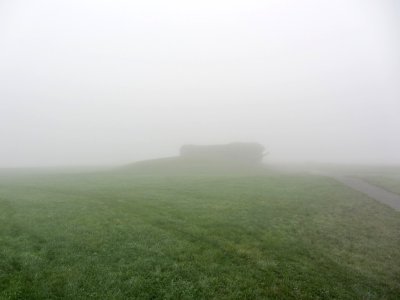
then we head west to Longues-sur-Mer... |
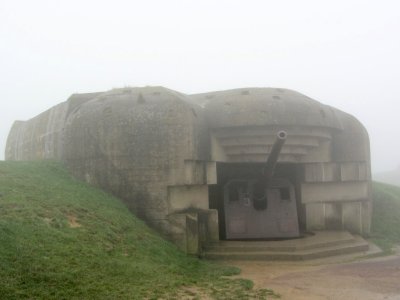
...where a battery of several guns rises out of the mist |
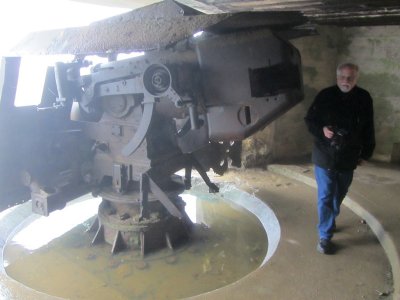
Tom stands over 6ft; these guns were huge |
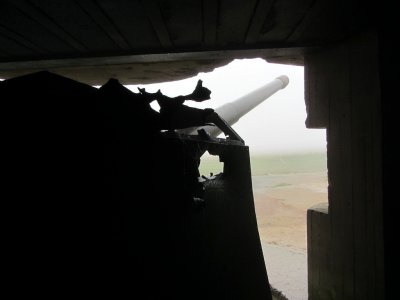 |
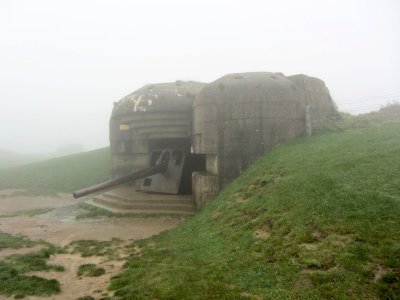 |
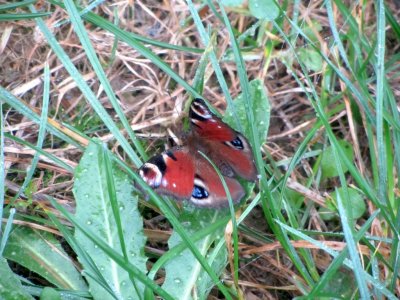 |
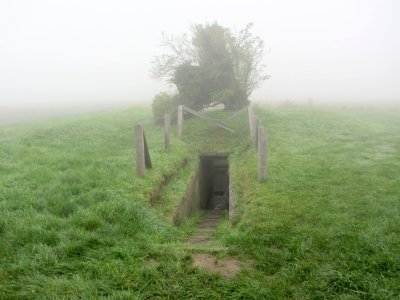
and in the surrounding area, underground communications boxes are still here |
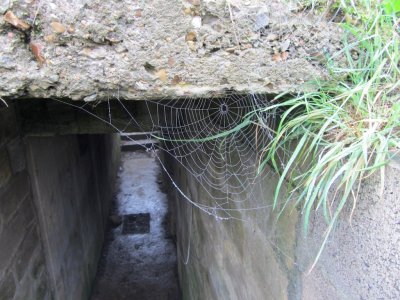 |
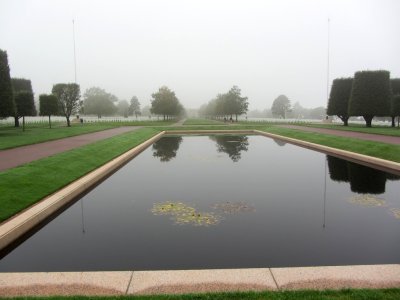
from Longues, we drive to the American military cemetery near Colleville-sur-Mer |
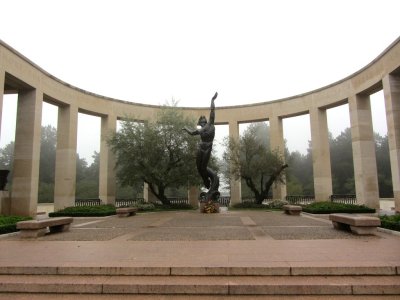
about 40% of the American troops who fell in Normandy on D-Day and the difficult weeks which followed are gathered here |
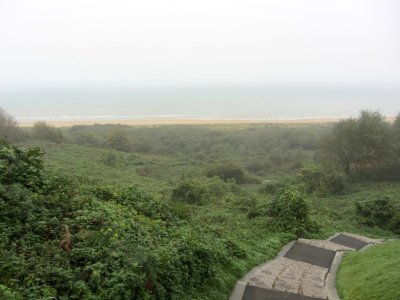
the view out to Omaha Beach from the cemetery is foggy and quiet today |
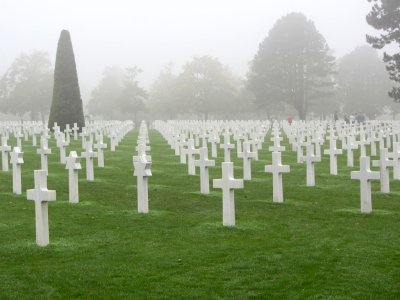
more than 9000 graves are here... |
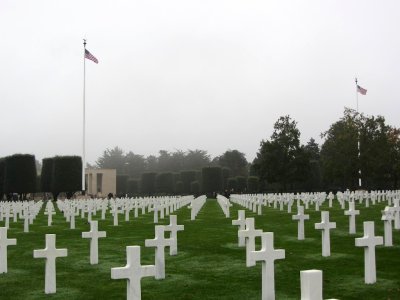
...and a memorial for more than 1500 forever missing |
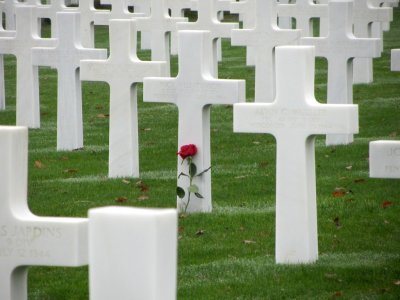
many visitors leave markers... |
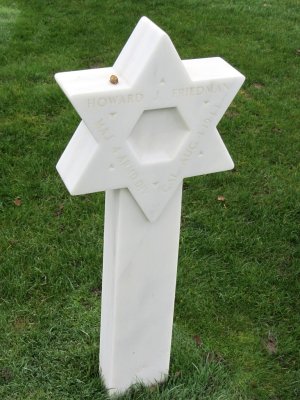 |
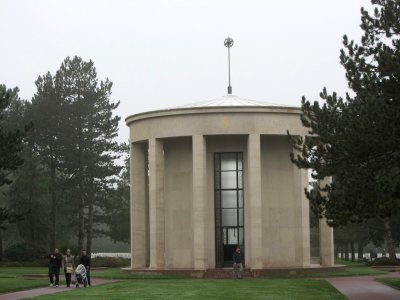
a small chapel stands at the center of the site |
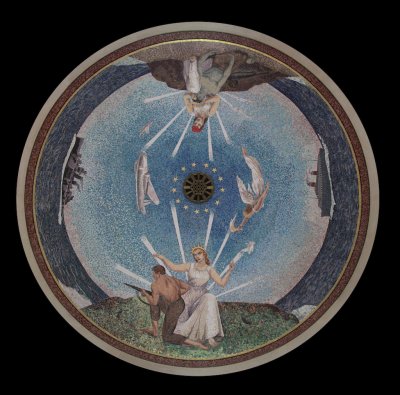
the ceiling mosaic depicts America sending a soldier ready to fight... |
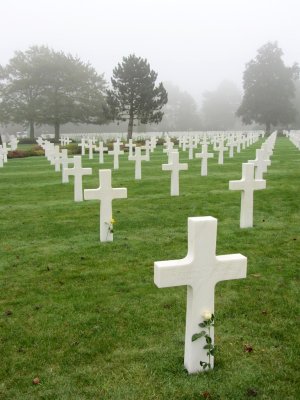
...and France embracing a fallen one |
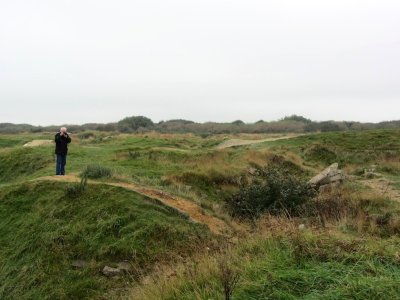
we visit Omaha Beach and then walk the battle-scarred bluff above Pointe du Hoc |
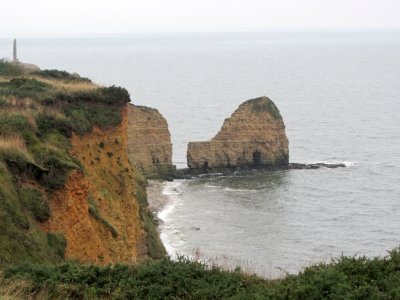
the Pointe was the site of a fierce cliff-face battle on D-Day... |
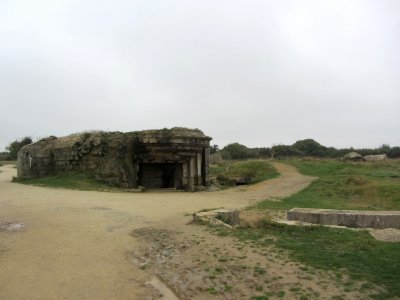
...for the capture of these gun placements |
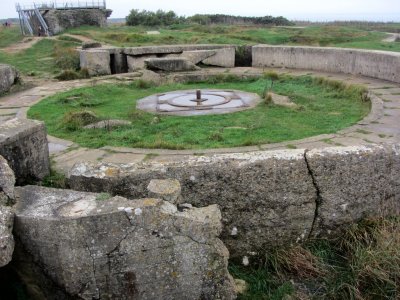 |
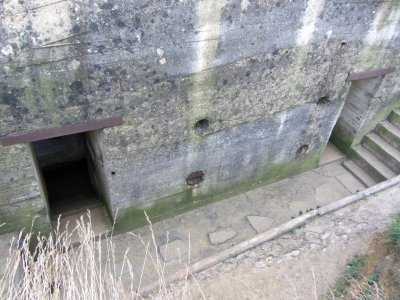 |
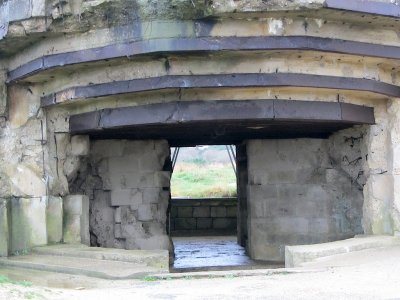
from the installation... |
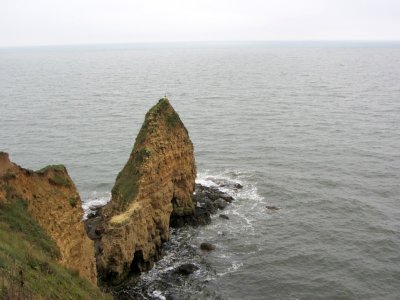
...the view over the Pointe and across the channel is long... |
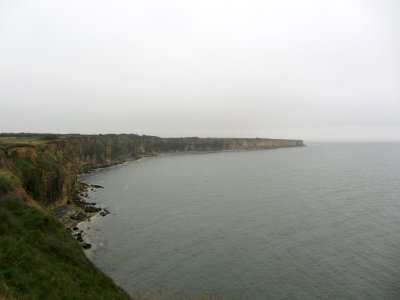
...and the guns would have had wide coverage of the coastline |
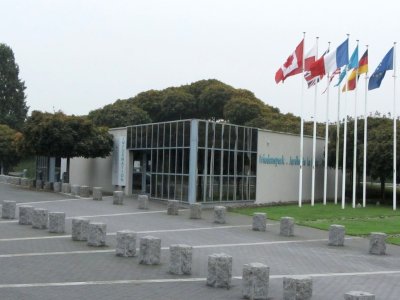
our day ends at the German military cemetery near La Cambe |
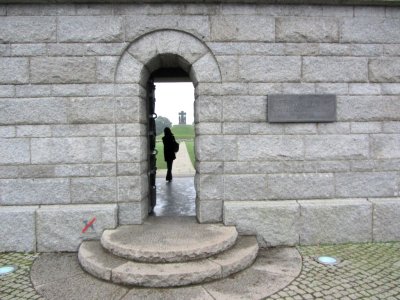 |
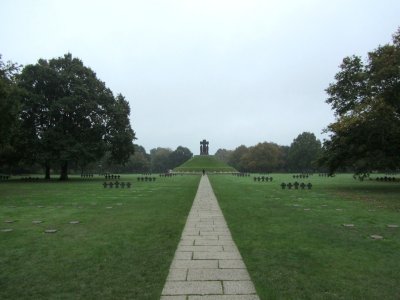
over 20,000 soldiers lie here, killed in Normandy on and after D-Day |
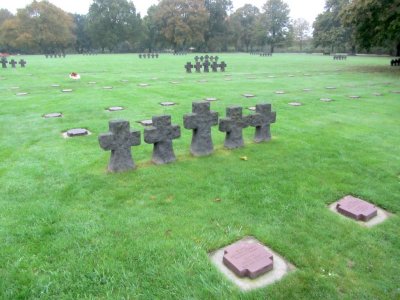 |
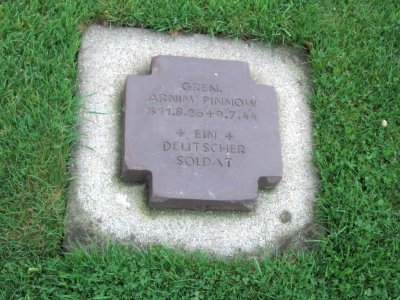
some soldiers had yet to reach 18 years; others remain unidentified |
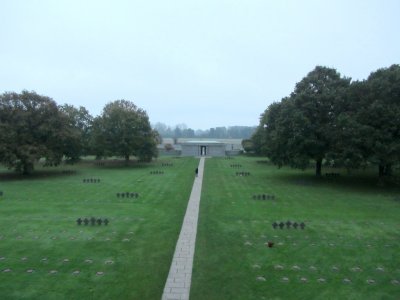 |
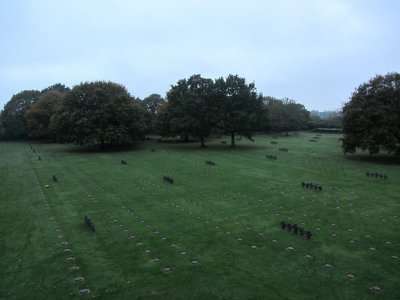
night falls as we depart |
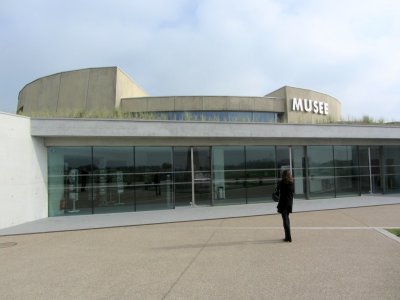
the next day, we head for Utah Beach and its museum and memorials near La Madeleine |
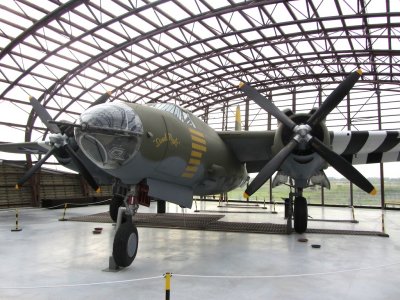
in the museum, some of the large equipment used in the landing |
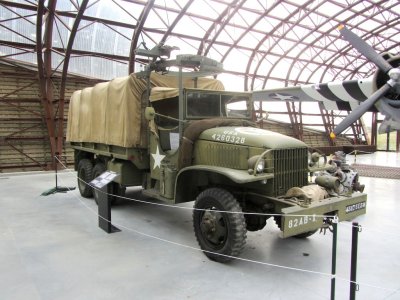 |
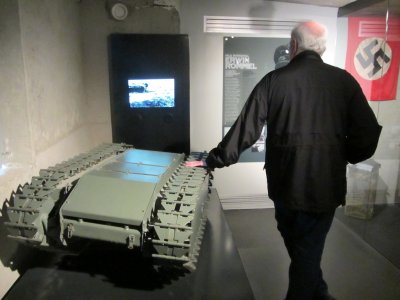
this nasty little thing was a remote-controlled mobile bomb |
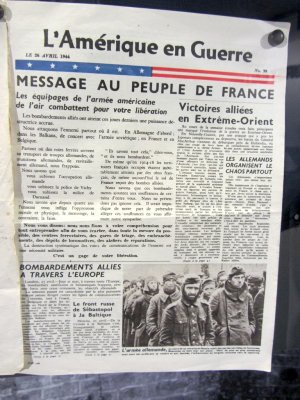
French-language information dropped by American planes to encourage people in the occupied towns |
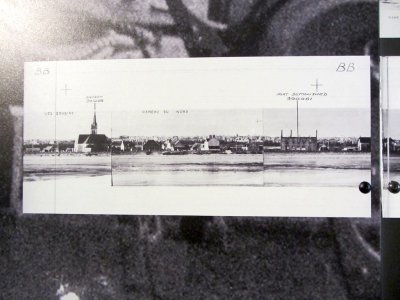
detailed photos of all the landing sites were prepared in advance via dangerous spy missions |
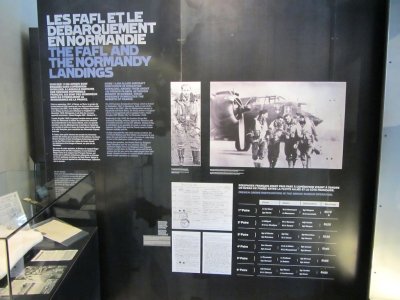
here's a display on the FAFL, French air forces which also supported the D-Day landings |
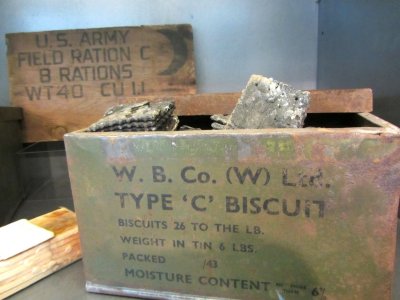
here's some incentive to get the war over ASAP |
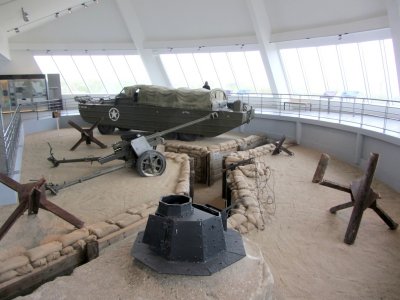 |
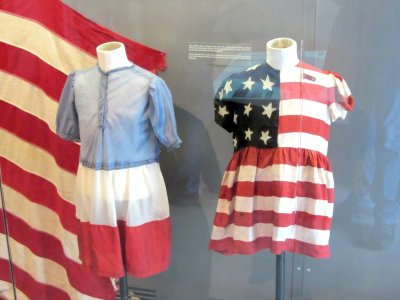
these dresses were made for young French girls from US parachute cloth, and worn for celebrations one year after D-Day |
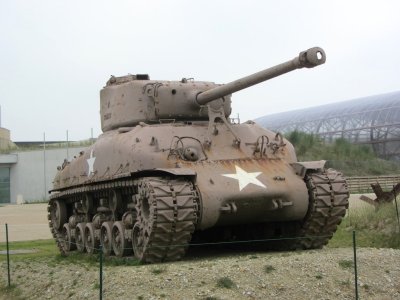
a Sherman tank at the museum site |
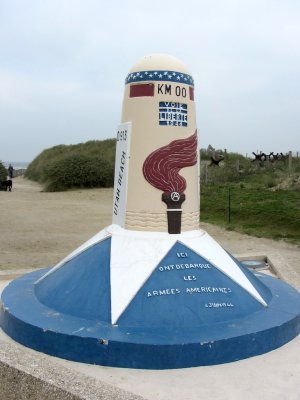
'kilometer zero' at the Utah Beach landing site: start of the 1944 Liberty Way |
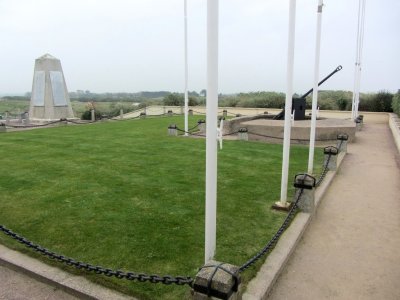
the Utah Beach memorial stands on the site of a captured gun placement, turned Allied communications post |
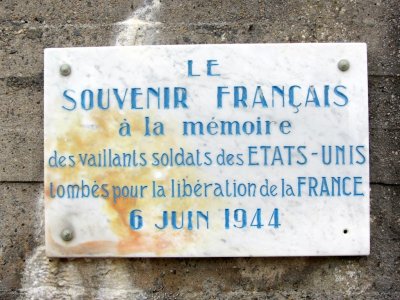
everywhere in Normandy, French gratitude to American and Allied troops was and remains very strong |
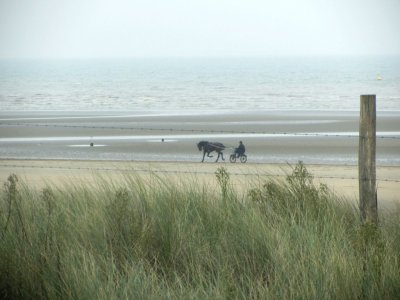
Utah Beach is rather placid now |
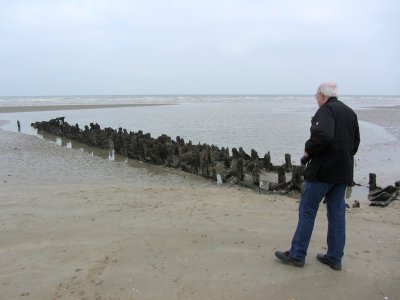 |
 |
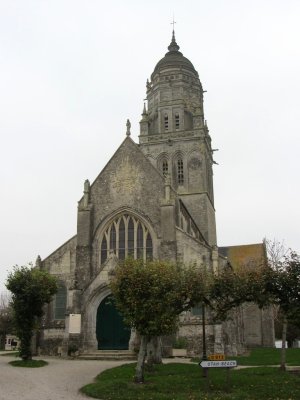
the small town of Ste-Marie-du-Mont was a complex battle site for paratroopers following D-Day |
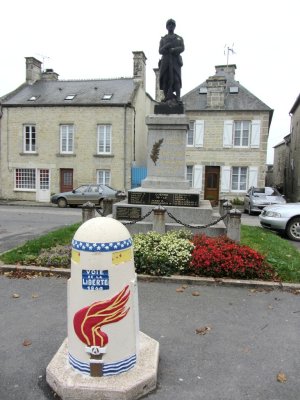
today the town square remembers the time with many markers |
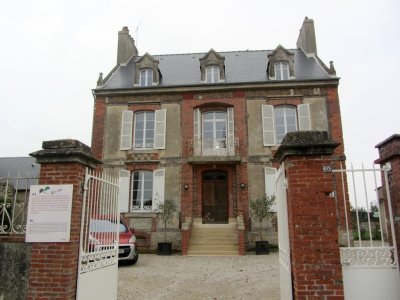
every other house seems to have its own story |
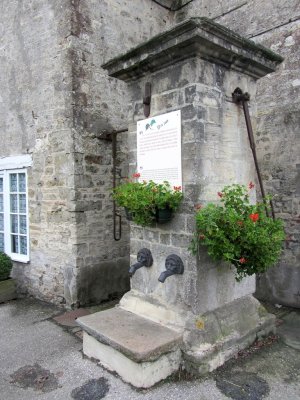
this water fountain was used as shelter by a US marksman during the fight for the town |
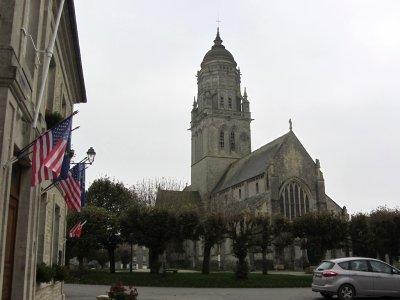
even with its long history, this town remembers its liberation most |
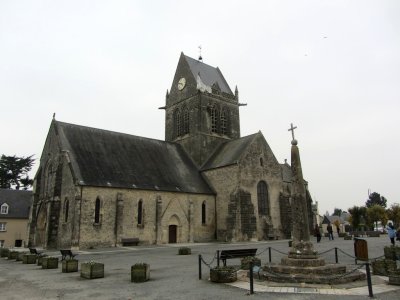
nearby Ste-Mère-Église was also a target for paratroopers... |
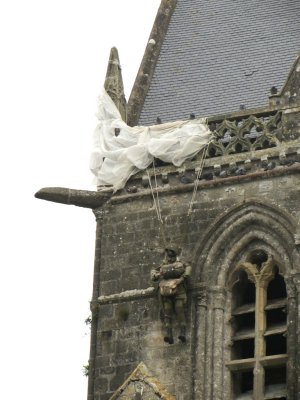
...one of whom got stuck for a few hours |
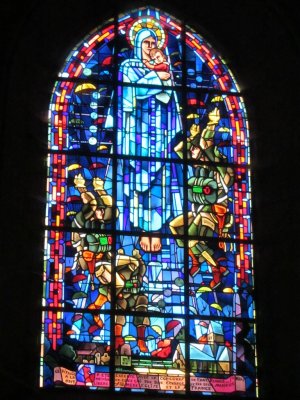
the days of battle are remembered in the church windows |
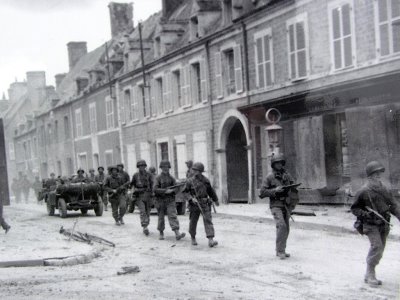
looking at old photos around town... |
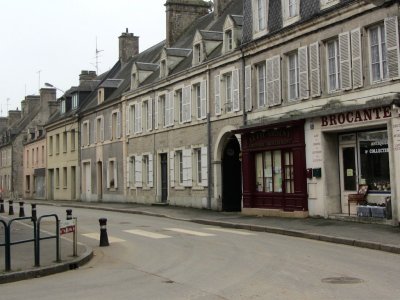
...it's not hard to see the town as soldiers did... |
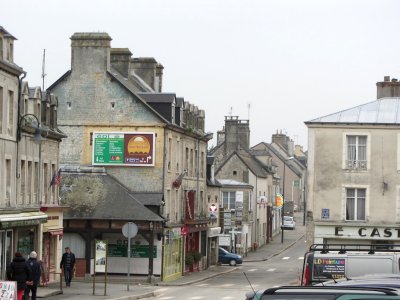
...and we wonder what other stories these streets know... |
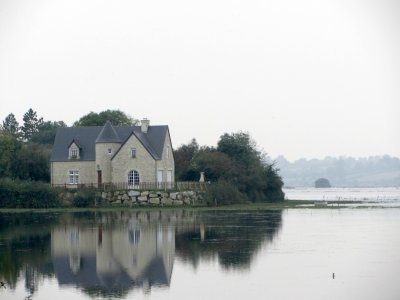
...or for that matter, all the towns on the Cherbourg peninsula |
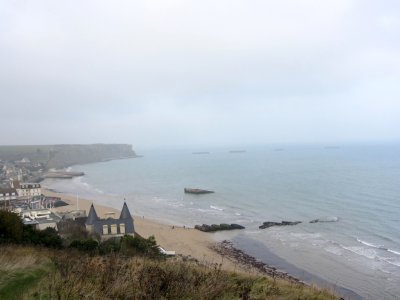
the next day, the sky is clearer and we return to Arromanches near Gold Beach |
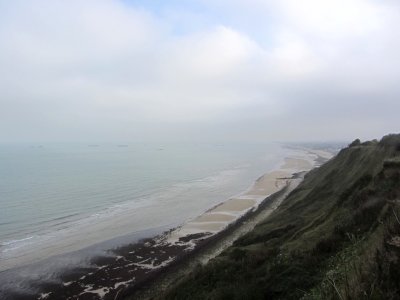
there are still relics of the 'Mulberries' which made up the artificial harbor of Port Winston |
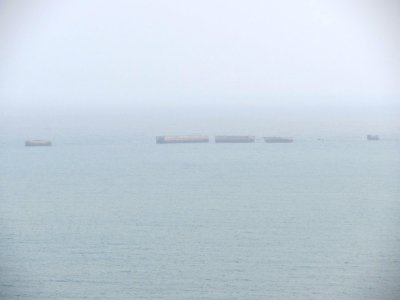 |
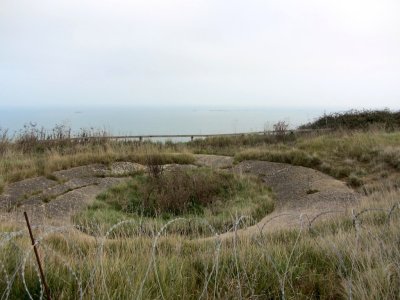
scars and fragments of war structures remain even up on this cliff |
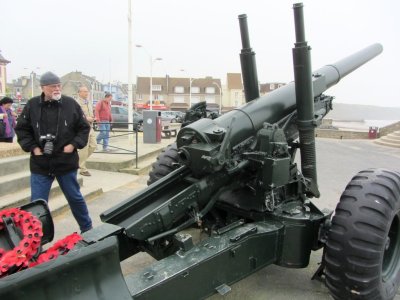
down in the town, the history museum has pieces of machinery... |
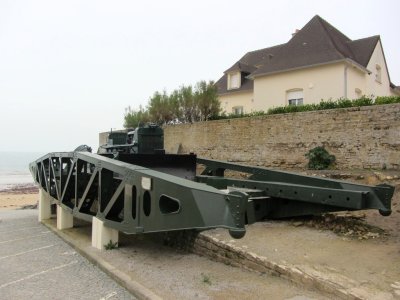
...and pier parts brought from England in June 1944 |
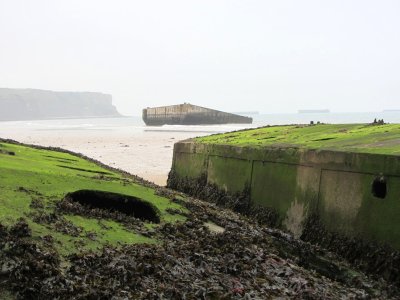
pier pontoons and other hulks dot the beach and harbor |
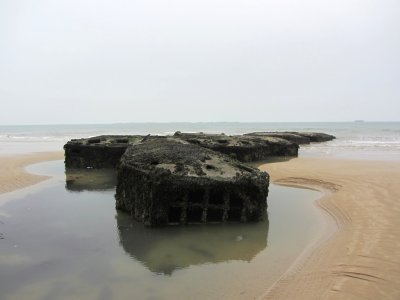 |
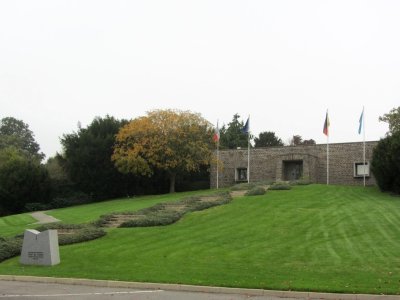
heading southwest toward Bretagne, we stop at the German ossuary near Huisnes-sur-Mer |
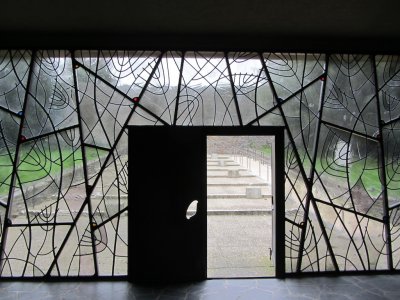
the remains of some 12,000 WWII soldiers were brought here from around France |
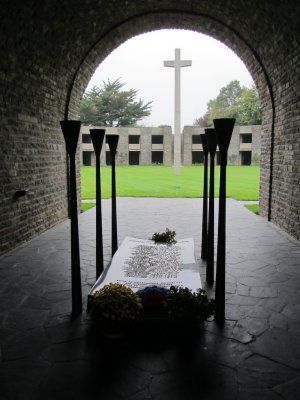 |
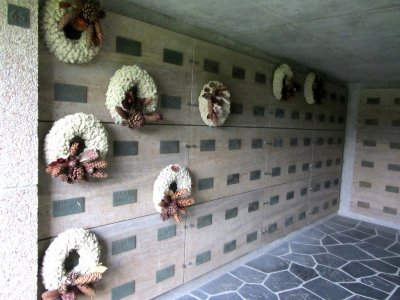 |
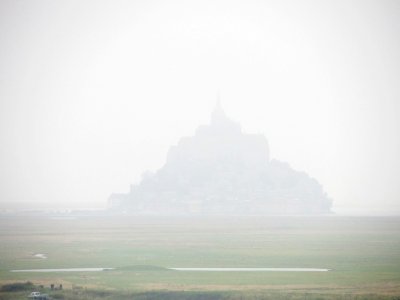
still too foggy to see Mont St. Michel |
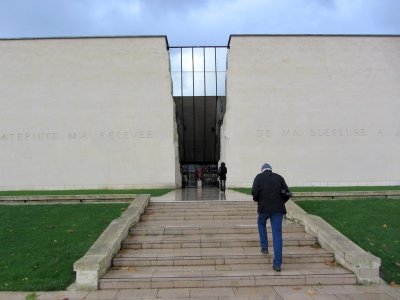
we'll end our trip at the Caen Memorial and Peace Center |
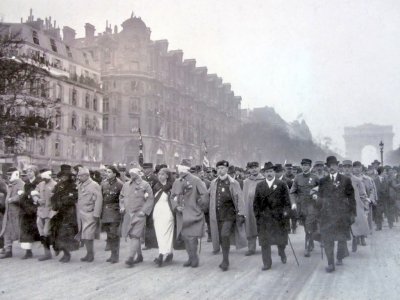
the museum starts its story with the end of WWI and the build-up into WWII |
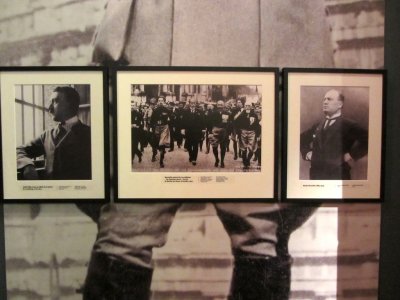
it of course covers the usual suspects... |
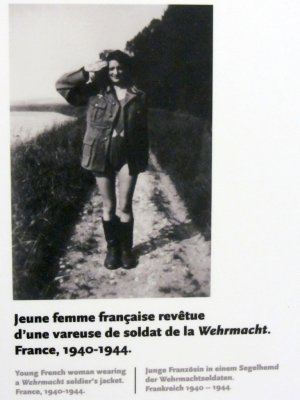
...but branches to discuss economic pressures, collaboration in all forms... |
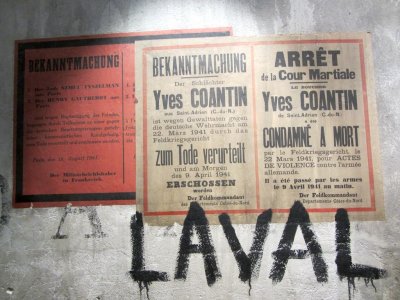
...resistance in many forms... |
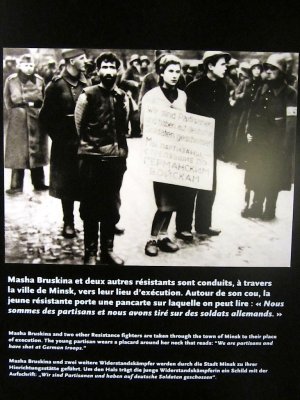
...and the response to resistance around Europe... |
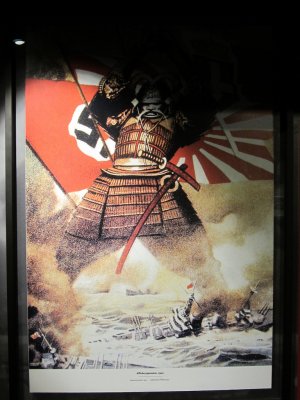
...propaganda by all involved governments... |
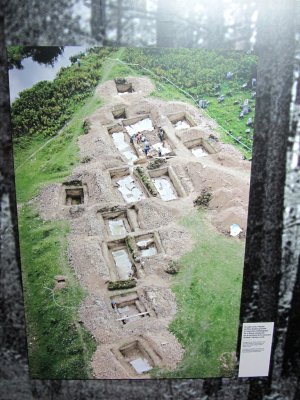
...extermination of Jews... |
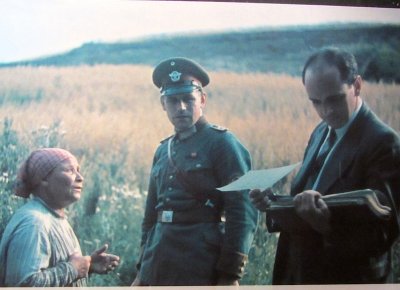
...and Roms... |
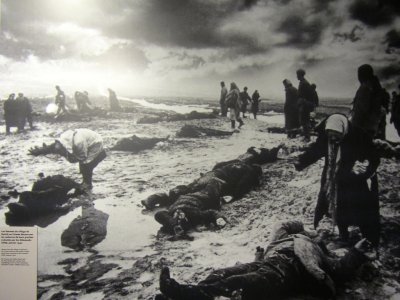
...and communists |
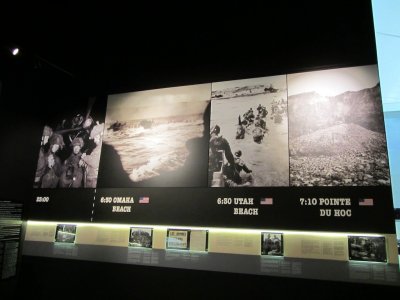
the D-Day story is told again, with some new images and info for us |
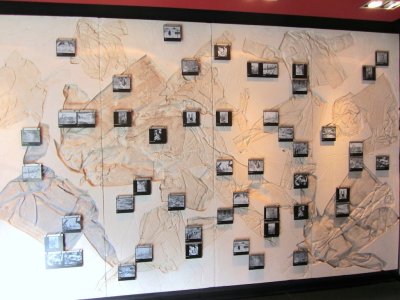
1945 is marked by a study of destroyed cities... |
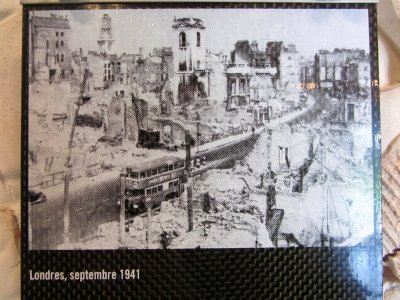
...including London... |
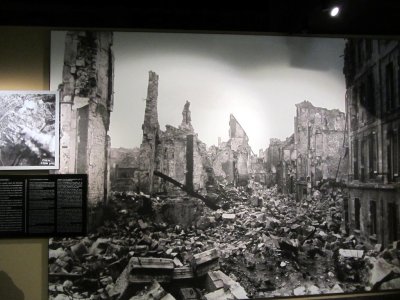
...and Caen, where the memorial is now |
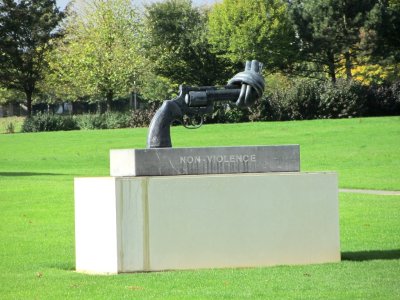
it's a topic much too large for one visit... |

panorama of the American military cemetery near Colleville-sur-Mer |











